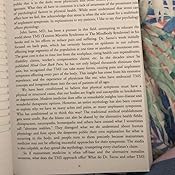Quantum Leap In Drug Discovery: D-Wave's (QBTS) AI-Powered Approach

Table of Contents
D-Wave's Quantum Annealing Approach to Drug Discovery
D-Wave Systems, trading under the ticker QBTS, utilizes a unique approach to quantum computing known as quantum annealing. Unlike classical computers that process information bit by bit, quantum annealing leverages the principles of quantum mechanics to explore a vast solution space simultaneously. This allows it to tackle optimization problems – crucial in drug discovery – far more efficiently than traditional methods.
Quantum annealing excels at finding the global minimum of complex energy landscapes, mirroring the challenge of identifying optimal molecular structures and interactions for drug candidates. The advantages of this approach for drug discovery are significant:
- Faster optimization of molecular structures: Quantum annealing can quickly identify the most stable and effective molecular configurations for drug candidates, significantly reducing the time needed for computational chemistry simulations.
- Improved prediction of drug efficacy and toxicity: By simulating complex molecular interactions, quantum annealing can enhance the prediction of a drug's effectiveness and potential side effects, leading to safer and more efficient drug development.
- Discovery of novel drug candidates: The ability to explore a vastly larger solution space opens up the possibility of identifying novel drug candidates that may have been missed by traditional methods.
- Reduced time and cost of drug development: The accelerated computational capabilities of quantum annealing translate to reduced development times and lower overall costs, making drug development more accessible and efficient.
AI Integration: Enhancing the Power of Quantum Computing
D-Wave's quantum computing platform is further enhanced by the seamless integration of artificial intelligence (AI) and machine learning (ML). This synergy amplifies the power of quantum annealing, leading to improved accuracy and efficiency in drug design.
AI plays a crucial role throughout the process:
- AI-driven feature selection and data preprocessing: AI algorithms intelligently select the most relevant data features and pre-process them to optimize the quantum annealing process.
- AI-assisted interpretation of quantum computation results: AI helps interpret the complex output from quantum computations, making the results more understandable and actionable for researchers.
- ML models for predicting drug properties and interactions: ML models built upon the results from quantum computations can be used to predict various drug properties, such as solubility, absorption, and metabolism, further streamlining the development process.
- Improved accuracy and efficiency in drug design: The combined power of quantum annealing and AI leads to more accurate predictions and faster iteration cycles in drug design, significantly accelerating the overall drug discovery process.
Real-World Applications and Case Studies
While specific case studies detailing commercially confidential drug development projects are limited due to competitive sensitivities, D-Wave's technology is actively being explored and applied in collaborations with various pharmaceutical companies and research institutions. These partnerships demonstrate the growing recognition of quantum computing's potential in revolutionizing drug discovery.
Areas of application include:
- Lead optimization: Identifying promising candidate molecules from a large pool of potential drugs.
- Drug-target interaction prediction: Modelling the binding of a drug molecule to its target protein.
- Toxicity prediction: Assessing the potential for adverse effects of a drug candidate.
The focus is on demonstrating improvements in prediction accuracy and speed, which, even in early stages, indicate a significant potential for reducing the time and resources traditionally spent on these crucial steps in drug development. Data supporting these improvements are expected to be published in academic journals and industry reports as projects progress.
Challenges and Future Outlook for Quantum Drug Discovery
Despite the promising potential, challenges remain in the field of quantum drug discovery.
- Scalability of quantum computers: While quantum computers are rapidly advancing, scaling them to handle even larger and more complex problems in drug discovery is an ongoing challenge.
- Data availability and quality: The availability of high-quality, labeled datasets for training AI models and validating quantum computations is crucial for success.
- Integration with existing drug discovery workflows: Seamlessly integrating quantum computing techniques into existing drug discovery workflows requires careful planning and collaboration.
- Future research directions and potential breakthroughs: Continued research into novel quantum algorithms and their application to drug discovery problems is essential for unlocking the full potential of this technology.
Despite these challenges, the long-term outlook for quantum drug discovery is extremely positive. As quantum computing technology continues to mature and the integration with AI deepens, we can expect significant breakthroughs in the years to come.
Conclusion
D-Wave's (QBTS) AI-powered quantum computing approach represents a significant advancement in drug discovery. By offering faster optimization, improved prediction capabilities, and the potential for discovering novel drug candidates, this technology promises to revolutionize the pharmaceutical industry. The advantages of this approach over traditional methods, particularly in terms of speed, efficiency, and innovation, are undeniable. To learn more about D-Wave's advancements in quantum computing for drug discovery and explore the potential applications of this transformative technology within the pharmaceutical industry, further research into quantum drug discovery, quantum computing in pharmaceuticals, and AI-powered drug development is strongly recommended.

Featured Posts
-
 Job Exchange Scandal Rocks The Navy Admiral Burkes Bribery Charges
May 21, 2025
Job Exchange Scandal Rocks The Navy Admiral Burkes Bribery Charges
May 21, 2025 -
 Theatre Tivoli Clisson Decouverte D Un Lieu Patrimonial Selectionne En 2025
May 21, 2025
Theatre Tivoli Clisson Decouverte D Un Lieu Patrimonial Selectionne En 2025
May 21, 2025 -
 New David Walliams Fantasy Novel Fing Receives Stans Approval
May 21, 2025
New David Walliams Fantasy Novel Fing Receives Stans Approval
May 21, 2025 -
 Everything You Need To Know About The Goldbergs
May 21, 2025
Everything You Need To Know About The Goldbergs
May 21, 2025 -
 Across Australia On Foot A Britons Race Against Pain And Deception
May 21, 2025
Across Australia On Foot A Britons Race Against Pain And Deception
May 21, 2025
Latest Posts
-
 Wife Of Tory Politician Remains Imprisoned For Anti Migrant Outburst In Southport
May 22, 2025
Wife Of Tory Politician Remains Imprisoned For Anti Migrant Outburst In Southport
May 22, 2025 -
 8 6 Thriller Tigers Prove Doubters Wrong Against Rockies
May 22, 2025
8 6 Thriller Tigers Prove Doubters Wrong Against Rockies
May 22, 2025 -
 Delayed Ruling Ex Tory Councillors Wifes Racial Hatred Tweet Appeal
May 22, 2025
Delayed Ruling Ex Tory Councillors Wifes Racial Hatred Tweet Appeal
May 22, 2025 -
 Rockies Vs Tigers 8 6 Upset Shows Promise For Detroit
May 22, 2025
Rockies Vs Tigers 8 6 Upset Shows Promise For Detroit
May 22, 2025 -
 Ex Tory Councillors Wife Faces Delay In Racial Hatred Tweet Appeal
May 22, 2025
Ex Tory Councillors Wife Faces Delay In Racial Hatred Tweet Appeal
May 22, 2025
